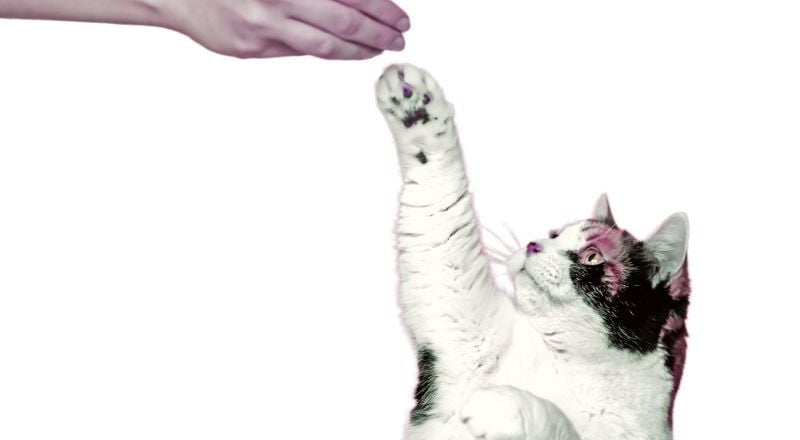Most cats can be trained to walk on a leash, yet certain feline characters are more accepting of new experiences like wearing a harness and walking outdoors. The best time to introduce your cat to a harness is as a kitten since he’ll be naturally more accepting of it; however, more established cats can likewise figure out how to walk on a leash if you’re patient and make leash training a positive experience.
If your cat looks longingly through the window and regularly attempts to dash out the backdoor, he may be a decent possibility for leash training. Going for standard outdoor strolls can keep cats healthy and diminish fatigue related conduct problems.
It requires some time and a little preparation, yet with the right hardware and disposition, soon you’ll be imparting radiant days around your neighborhood to your cat. That is the reason I’ve made this guide that walks you bit by bit on how to train your cat to walk on a leash and actually appreciate it!

Benefits of leash training your cat
Perhaps you’re thinking-how could anybody go through the difficulty of leash training a cat in any case? There are many benefits to training your cat to walk on a leash past the joy of their company outdoors.
Strengthen bond
Taking your cat for a walk is a superb method for advancing a healthy and happy relationship between you. Getting to know each other is essential to your cat’s general prosperity.
Exercise
Customary physical exertion assists your cat with maintaining a healthy body weight. Most cats, however, aren’t excessively worried about getting in their everyday cardio.
Indoor cats, specifically, are at a higher gamble of weight. So getting in some additional calorie-consuming minutes is time very much spent. Assist them with getting in shape with an activity you can both appreciate.
What you Require
Leash training a cat is different from leash training a dog and hence requires different gear. Ensure you use gear that is specifically intended for cats.
- Harness
- 6-8-foot leash
- Treats
- Any item probably going to definitely stand out
When to Start Leash Training a Cat?
Leash training is a protected way for your cat to get the vital exercise while appreciating investigating. If you intend to train it to walk on the leash, begin doing it once it is around two months old.
The more youthful kitten might find this sort of experience excessively unnerving, while the more established one might be obstinate and decline to collaborate.
By and large, as far as possible is roughly four months, and you can expect some opposition after that period.

How lengthy does it take to leash train a cat?
Training should be done in short. Subject to how your cat advances and how steady you are with training, it could require a couple of months for your cat to feel comfortable walking on a leash outdoors.
How to leash train your Cat
Training a cat to walk on a leash can require a touch of tolerance and adjust for both you and your cat, so make certain to begin gradually. This is what the cycle will resemble if you choose to take your cat for a walk.
Familiarize your cat with wearing a harness
While first showing your cat the harness, permit him to sniff and play with it prior to endeavoring to put it on. While investing energy with or in the harness, give him a lot of treats and wet food to build up positive affiliations. If your cat appears to be disinterested or uncomfortable in the harness, attempting different strap thicknesses, or providing it with a spritz of stress alleviation shower to make it seriously engaging.
When you clasp the harness, permit your cat to move around the house unreservedly and settle in. While measuring your cat, ensure the harness is cozy, yet entirely not excessively close. Notice your cat as he moves around in the house, looking at that he’s not squirming.
Get your cat used to walking on the leash
After your cat is comfortable with the harness, join the leash to the harness. Start by permitting your cat to walk around as you follow with the leash free. Before long, eliminate the harness and leash and rehash this cycle for a couple of days until your cat is relaxed and unreservedly walking.
Get your cat used to leash indoors
While regulating, permit your cat to drag the leash behind that person while uninhibitedly moving around your home. This will permit your cat to feel and become familiar with a smidgen of leash strain. Continuously try to regulate this and never leave a leash or harness on a solo cat.
Walk your cat indoors
After the cat has walked a little, delicately attempt to lead your cat toward another path. Use treats either dropped on the floor or held in your fingers to draw your cat and afterward award for moving if you really want to. Reward your cat with recognition and treats if he walks all alone, as well!
Heading outside
If the most your cat has interacted with the outdoors has experienced the window, it’s probably he will be fully on guard when you take him outside interestingly so take things gradually.
Remember that you don’t need to take your kitty a long way from home to assist him with becoming acclimated to nature. You can begin in your terrace – and if it’s fenced in, that is far better.
To start with, get your harnessed kitty and convey him outside to a quiet spot. Try not to allow your cat to walk out on the door on a leash or she might become acclimated to doing so when she’s not leashed.
Remain close to him and allow him to conclude when he’s prepared to do a little investigating. Keep the leash free and follow behind your cat, however don’t compel him to wander farther than he’s prepared.
Remember that walking a cat is different from walking a dog. While your cat may happily accompany you on lengthy walks, all things considered, he might like to just sniff around your yard and snooze in the sun.
In any case, it’s essential to focus on what your cat is comfortable doing; don’t drive him outside his comfort zone. Very much like at home, your kitty is the person who’s giving orders.
Bottom Line
For the initial not many walks, you should accept the transporter with you, so that if they become scared, you can place them in the transporter. Likewise, be careful that holding your cat while they are terrified and overreacted, may bring about them scratching you or harming themselves.
Make sure to show restraint. Furthermore, that your cat could need just to investigate the grass in the sun. Try not to be blundering with the leash. Cats are difficult. Also, hauling your cat in where you need to head is definitely not a silly experience for anybody.








